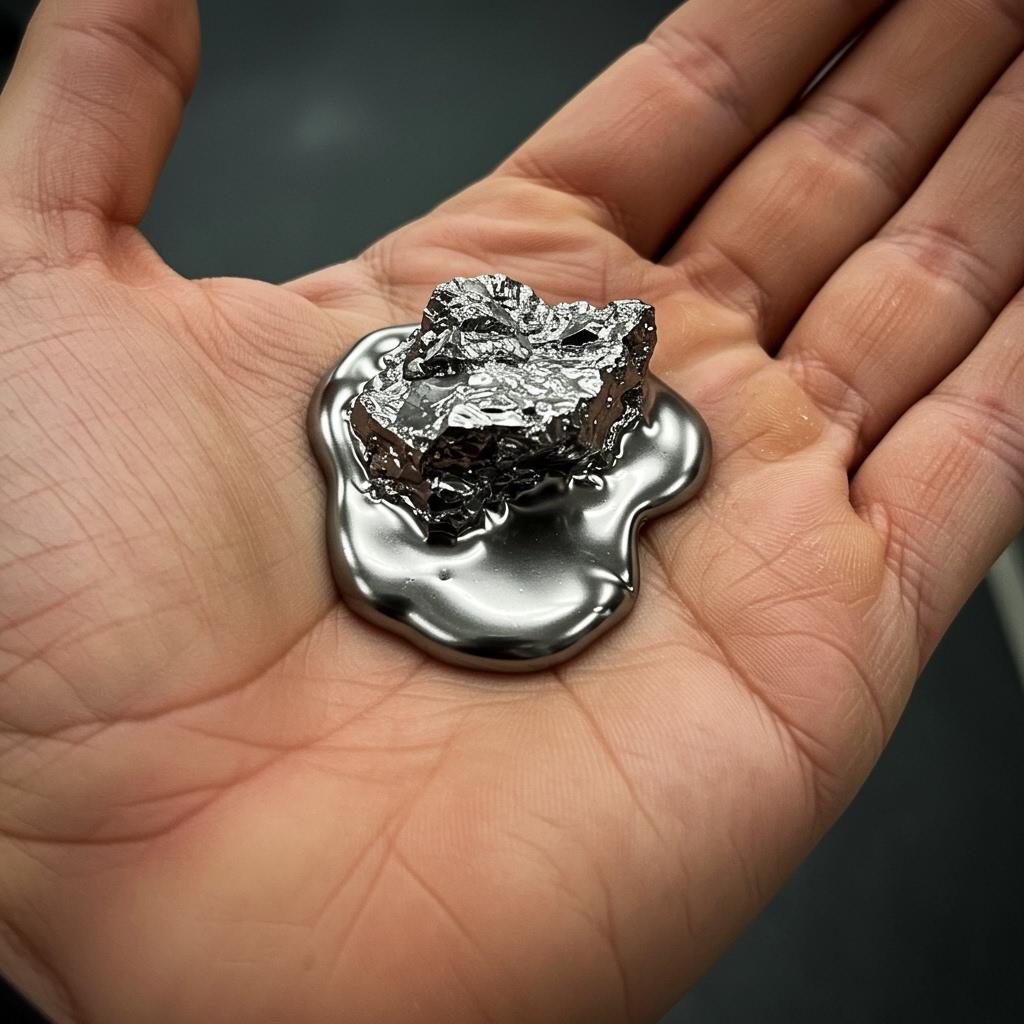Why gallium melts in your hand
 Gallium metal melting in the warmth of a human hand, demonstrating its unique low melting point.
Gallium metal melting in the warmth of a human hand, demonstrating its unique low melting point.
The cool metal that melts like ice
By Peter Teoh, Science Writer
Have you ever held a small piece of metal and watched it slowly melt right in your hand? Sounds like magic, but it’s actually science—and the metal is called gallium. Unlike most metals, gallium is a soft, silvery metal that melts at just about 30°C (86°F), just below or around the temperature of your own body. That means when you hold gallium, your body heat is enough to turn it from solid to liquid!
What makes gallium special?
Gallium is element number 31 on the Periodic Table. At room temperature, it’s a solid and looks like shiny aluminum. But here’s the twist: its melting point is only about 29.8°C (85.6°F)—much lower than most metals. In comparison, iron melts at a scorching 1538°C, and aluminum melts at 660°C. Your hand’s warmth is enough to gently melt gallium into a mirror-like liquid that pools in your palm.
The science behind melting
Melting happens when a solid’s atoms start moving enough to break free from their fixed positions and flow as a liquid. For gallium, the forces holding its atoms together in the solid state aren’t very strong, so it only takes a bit of heat to get those atoms moving freely.
Gallium also has a very high boiling point—about 2200°C—meaning it won’t evaporate or turn into gas easily. So, it stays liquid over a wide temperature range, which makes it useful for special thermometers that measure very high temperatures where mercury would boil away.
Why doesn’t gallium melt on your table?
Room temperature is usually around 20–25°C (68–77°F), which is just below gallium’s melting point. So if you leave it on your desk, it stays solid. But hold it in your hand, and the extra heat pushes it over the edge to melt. If you pour liquid gallium back onto a cooler surface, it solidifies again—like magic, but it’s just physics.
More than just a neat trick
Gallium isn’t just for show. It’s used in electronics like LEDs (those tiny lights in screens and flashlights) and in special computer chips called semiconductors. Gallium compounds help make devices that are in your smartphones, TVs, and even space rovers! It’s soft enough to alloy (mix) with other metals to create materials with useful properties, thanks to its unusual melting behavior.
Handle with care
Gallium isn’t toxic like mercury and safe to touch, but it can stain your skin and isn’t meant to be eaten. Also, it can damage certain containers like glass or aluminum by seeping into them, so it’s stored carefully.
So next time you see gallium, remember: it’s a metal that melts in your hand because your body heat is just enough to make its atoms start dancing free. Science can be pretty cool—and a little magical!
Side Notes
- Gallium expands when it freezes, similar to water, which is unusual for metals.
- It’s found in tiny amounts in the Earth’s crust, usually inside other minerals.
- Other metals that can be liquid near room temperature include mercury, cesium, and rubidium.
Trending Now
- The rise of gallium nitride LEDs in smartphone screens
- New gadgets using gallium-based semiconductors
- Cool science experiments you can try with safe metals at home